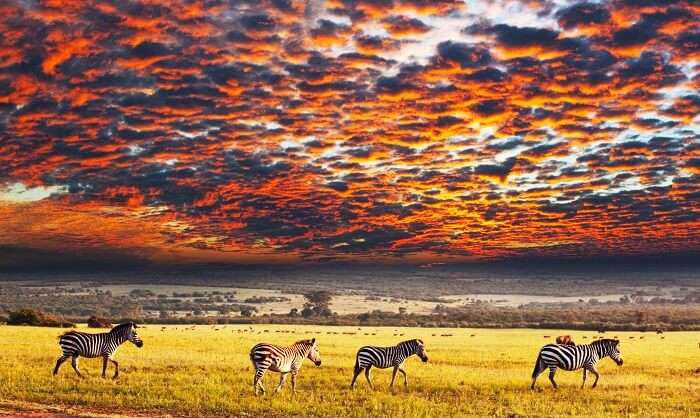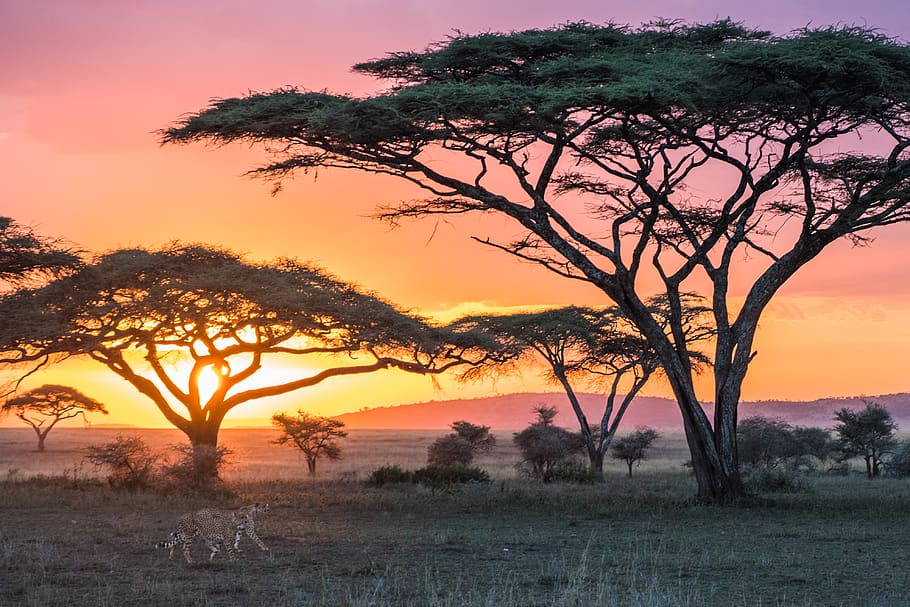When it comes to natural wonders on our planet, the Serengeti National Park in Tanzania stands as an emblem of sheer awe and magnificence. Stretching over 14,750 square kilometers of untamed wilderness, it’s not just a national park; it’s a living, breathing testament to the incredible biodiversity and stunning landscapes that our world has to offer. In this article, we delve into the heart of Serengeti National Park, exploring its rich ecosystems, iconic wildlife, and the magic that has made it a sought-after destination for adventurers, researchers, and nature enthusiasts from around the globe.
A Geographic Marvel

Serengeti National Park sprawls across northwestern Tanzania, adjoining the Kenyan border. This vast expanse of wilderness is part of the larger Serengeti ecosystem, which includes adjacent game reserves and conservation areas, making it one of the most significant wildlife conservation areas globally. It is, in fact, one of the Seven Natural Wonders of Africa, a title that speaks volumes about its unique charm.
The Great Migration: Nature’s Epic Journey
One of the most captivating phenomena that unfold within the Serengeti’s borders is the Great Migration. Each year, millions of wildebeests, zebras, and gazelles partake in this epic journey in search of greener pastures. The migration begins in the southern Serengeti and extends to the northern part, including the Maasai Mara in Kenya.
This grand spectacle of life and death is a marvel to witness. It’s a reminder of the circle of life in its purest form. Predators such as lions, cheetahs, and hyenas follow the herds, making it a wildlife enthusiast’s paradise. If you’re lucky enough to be here during the migration season, you’ll witness a breathtaking display of nature’s raw power.
A Wealth of Biodiversity
Beyond the Great Migration, Serengeti National Park is home to an astonishing array of wildlife. The park boasts the famous Big Five – lions, leopards, elephants, buffaloes, and rhinoceroses. These majestic creatures roam freely within the park’s boundaries, offering visitors an unparalleled opportunity to observe them in their natural habitat.
Additionally, the park supports over 500 bird species, making it a birdwatcher’s paradise. You can spot vultures circling in the skies, graceful eagles perched on tree branches, and colorful parrots adding a vibrant touch to the landscape.
Diverse Landscapes
Serengeti’s landscapes are as diverse as its wildlife. From sweeping savannahs to acacia-dotted plains and dense woodlands, the park’s terrain is a photographer’s dream. The Seronera Valley, in particular, is known for its picturesque scenery and is often referred to as the ‘heart’ of the Serengeti.
For those looking for a more rugged adventure, the Grumeti River in the Western Corridor is an ideal spot to witness intense battles between crocodiles and migrating wildebeests. The Lobo area in the north, on the other hand, offers a quieter and more secluded experience, perfect for those seeking solitude amidst nature’s beauty.
Conservation Efforts
The Serengeti National Park isn’t just a tourist destination; it’s a stronghold of conservation efforts. The park’s management tirelessly works to protect its delicate ecosystems and the diverse species that call it home. Anti-poaching units, wildlife researchers, and local communities all play vital roles in preserving this natural treasure for generations to come.
Visiting Serengeti National Park
To experience the wonder of Serengeti National Park firsthand, there are several options for travelers. You can choose from a range of safari packages, including guided tours that cater to your preferences. Whether you’re interested in photography, birdwatching, or simply witnessing the Great Migration, there’s an adventure waiting for you.
Conclusion
In conclusion, Serengeti National Park in Tanzania is a remarkable testament to the beauty and complexity of our natural world. Its diverse landscapes, iconic wildlife, and the annual Great Migration make it a destination like no other. Beyond its breathtaking scenery, the park’s commitment to conservation ensures that this wonderland will continue to inspire and amaze generations to come.
So, if you’re in search of an awe-inspiring adventure, look no further than Serengeti National Park. Immerse yourself in the splendor of this pristine wilderness, and let the magic of nature captivate your senses.
FAQs
What is the best time to visit Serengeti National Park, Tanzania?
The best time to visit is during the dry season from June to September when wildlife congregates around water sources, making it easier to spot.
Are there accommodations within the park?
Yes, the park offers various accommodations, including lodges and campsites, providing options for different budgets.
Is it safe to go on safari in Serengeti National Park?
Yes, with experienced guides and proper precautions, safari adventures in Serengeti National Park are safe and highly enjoyable.
What wildlife can I expect to see in Serengeti National Park?
You can expect to see a wide range of wildlife, including lions, cheetahs, giraffes, zebras, hippos, and numerous bird species.
How do I get to Serengeti National Park?
You can fly into Kilimanjaro International Airport or Julius Nyerere International Airport and then take a domestic flight to Seronera Airstrip, which is located in the heart of the park.
Is Serengeti National Park suitable for family trips?
Absolutely! Serengeti offers family-friendly accommodations and activities, making it an ideal destination for a memorable family adventure.
